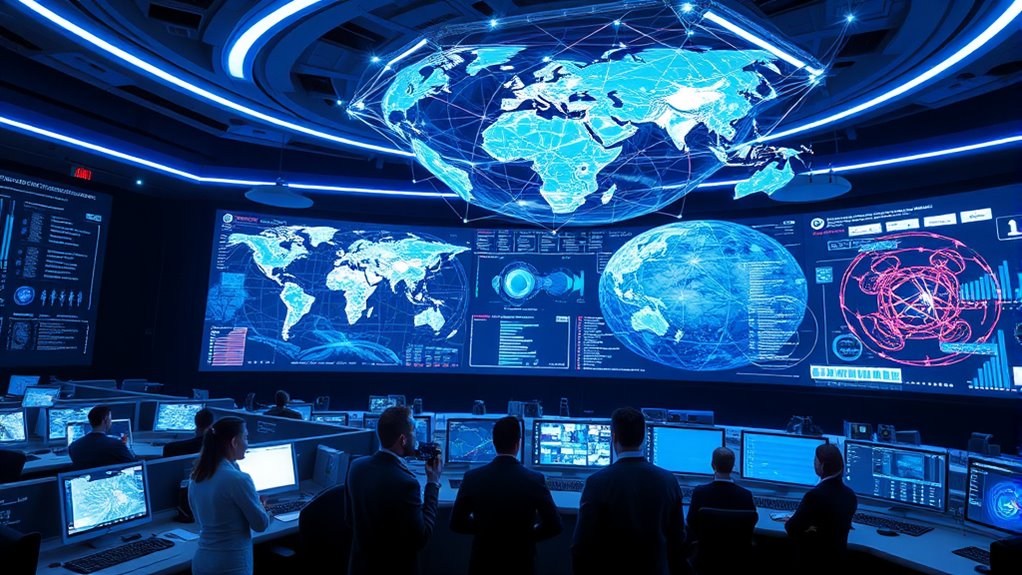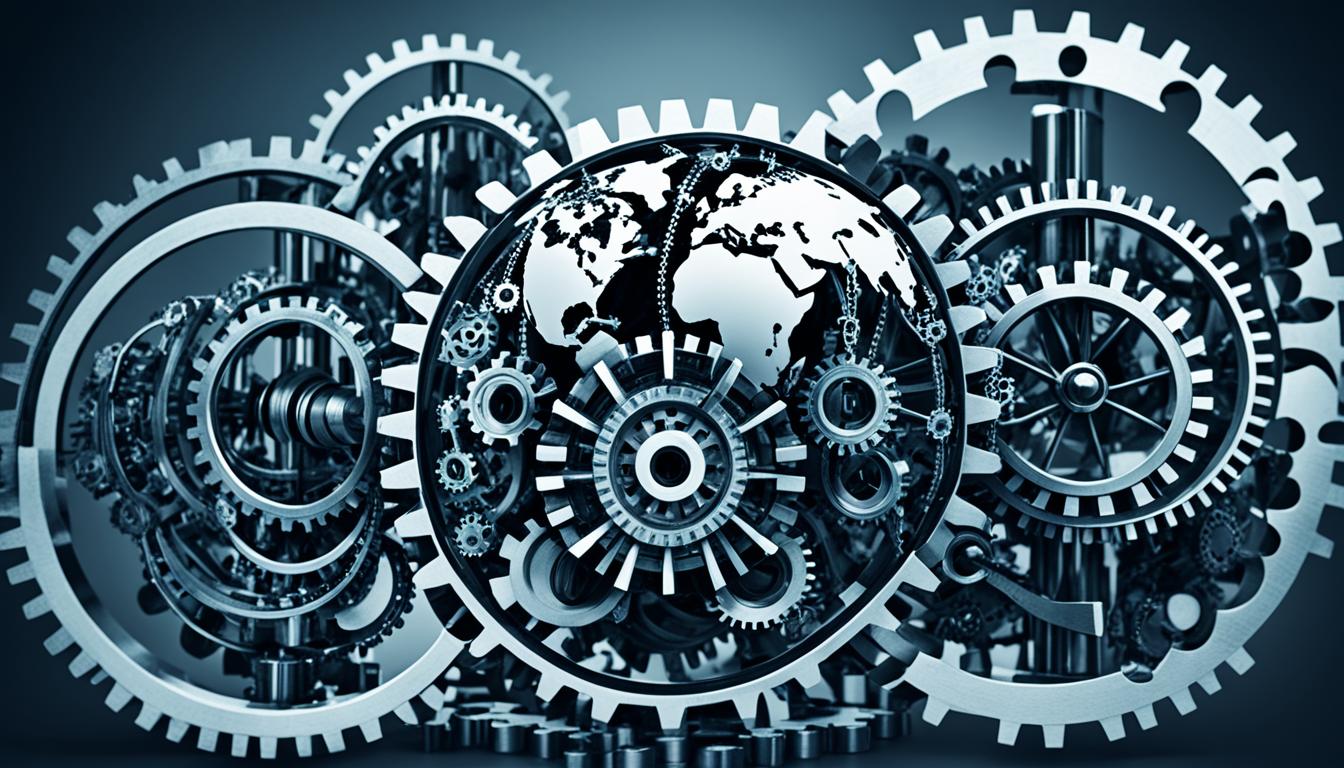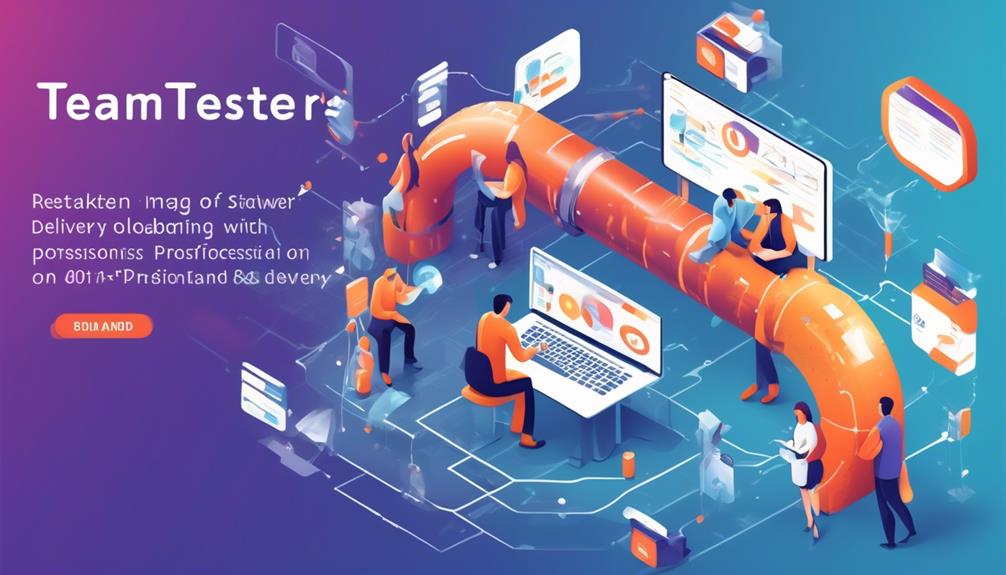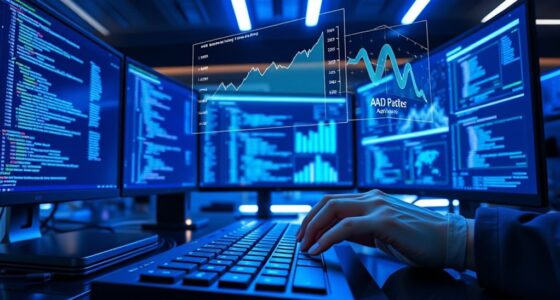Digital twins let you create detailed virtual models of users and systems worldwide, enabling real-time simulation and analysis of complex interactions across diverse environments. By continuously syncing sensor data, these models reflect current states and help optimize operations, predict issues, and test scenarios without physical impact. They support large-scale, interconnected ecosystems like smart cities or global networks, making operations smarter and more resilient. Keep exploring to discover how digital twins can revolutionize user simulation at planetary scale.
Key Takeaways
- Digital twins can create virtual user models to simulate behaviors and interactions at a global scale.
- They enable real-time monitoring of user activity across diverse platforms and locations.
- Simulating users helps optimize digital experiences and predict system loads or failures.
- Large-scale user models support testing new features or policies virtually before deployment.
- They facilitate data-driven decision-making by analyzing aggregated user patterns and trends.
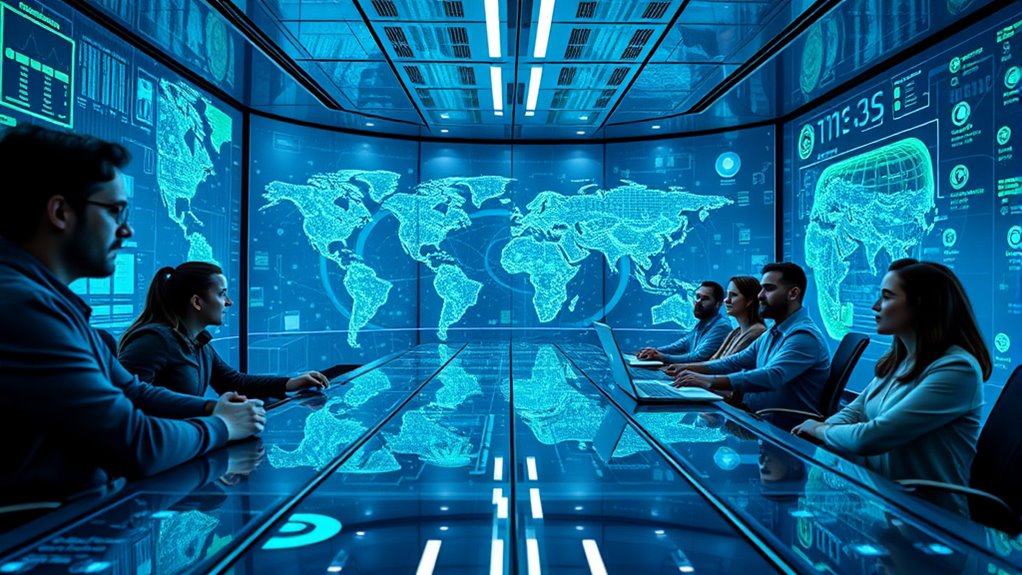
Have you ever wondered how industries optimize operations and predict maintenance with greater accuracy? The answer lies in the power of digital twins, which create dynamic virtual models of real-world assets, systems, or even entire processes. These virtual models are constantly updated through data synchronization, ensuring they reflect the current state of their physical counterparts. This continuous data exchange allows you to simulate scenarios, identify potential issues, and make informed decisions faster than ever before.
When working with digital twins, virtual modeling becomes your foundation. You develop a detailed digital replica of an asset, such as a machine or a building, which incorporates sensors and connected devices to gather real-time data. This virtual model isn’t static; it evolves as new information flows in. Data synchronization ensures that your digital twin stays aligned with the physical item, capturing everything from temperature fluctuations to operational wear and tear. By maintaining this tight connection, you can monitor performance, detect anomalies early, and plan maintenance proactively, reducing downtime and saving money.
Imagine you’re managing a fleet of industrial equipment spread across multiple locations. Instead of relying solely on manual inspections or delayed reports, you use digital twins to get an instant, holistic view of each unit. As data streams in from sensors, your virtual models update automatically, providing real-time insights. You can simulate how a change in operating conditions might affect performance or forecast when parts might need replacement. This proactive approach, powered by virtual modeling and real-time data synchronization, transforms maintenance from reactive to predictive.
Furthermore, these virtual models enable you to optimize operations at a scale that was previously impossible. By integrating data from numerous digital twins, you can identify patterns, forecast trends, and implement improvements across entire systems. This scalability is critical when dealing with complex, interconnected environments, like smart cities or large manufacturing plants. It allows you to simulate the impact of new policies, infrastructure changes, or technological upgrades before executing them in the real world, minimizing risks and ensuring efficiency.
In essence, digital twins leverage virtual modeling and data synchronization to create a seamless bridge between the physical and digital worlds. They empower you to simulate, analyze, and optimize at planet scale, making operations smarter, more resilient, and more efficient. Whether you’re predicting maintenance needs or testing new operational strategies, this technology transforms how industries operate by giving you a detailed, real-time digital counterpart to guide your decisions.
Frequently Asked Questions
How Do Digital Twins Ensure User Privacy and Data Security?
You want to know how digital twins protect user privacy and data security. They implement privacy safeguards like anonymizing data and controlling access. Additionally, they use data encryption both during transmission and storage, preventing unauthorized access. These measures guarantee your personal information remains secure and private, even when digital twins simulate user behavior at a massive scale. This way, your data stays protected while enabling effective and secure digital twin operations.
What Industries Benefit Most From Planetary-Scale Digital Twins?
You’ll find planetary-scale digital twins benefit industries like smart cities and healthcare innovation most. In smart cities, they help optimize traffic, energy, and infrastructure, improving residents’ lives. For healthcare, they enable detailed simulations for personalized treatments and system efficiency. By providing real-time, large-scale insights, these digital twins help sectors innovate faster and operate more sustainably, making them invaluable tools for tackling complex, global challenges.
How Accurate Are Digital Twin Simulations Compared to Real User Behavior?
Think of digital twin simulations as a mirror reflecting real user behavior, but not a perfect one. You might find that behavior modeling is quite close, yet simulation accuracy varies depending on data quality and complexity. While they offer valuable insights, some nuances of human behavior still slip through the cracks. So, you should see these simulations as helpful guides, not infallible predictions, always open to refinement.
What Are the Main Challenges in Scaling Digital Twins Globally?
You’ll face significant scalability hurdles as you try to expand digital twins globally. Managing vast amounts of data becomes complex, especially with data synchronization across different regions and systems. Ensuring real-time updates, maintaining accuracy, and handling diverse user behaviors challenge your infrastructure. Overcoming these hurdles requires robust architecture and efficient data management strategies, but doing so is essential for creating reliable and effective digital twin simulations at a planetary scale.
How Do Digital Twins Adapt to Rapidly Changing User Trends?
You need to focus on behavior modeling and trend forecasting to adapt digital twins to rapidly changing user trends. By continuously analyzing real-time data, you can update the twin’s models to reflect new behaviors and preferences. This proactive approach guarantees your digital twin stays relevant and accurate, allowing you to respond swiftly to shifting trends and make informed decisions that align with user needs.
Conclusion
As you embrace the future of digital twins, remember they’re more than just tech—they’re your universe’s mirror, echoing your every move like a cosmic scribe. With the power to simulate users at planet scale, you’re stepping into a new era of understanding and innovation. Just as the Wright brothers dreamed of soaring through skies, today’s pioneers wield digital twins to shape tomorrow’s world, blending imagination with reality in a way that’s truly out of this world.
